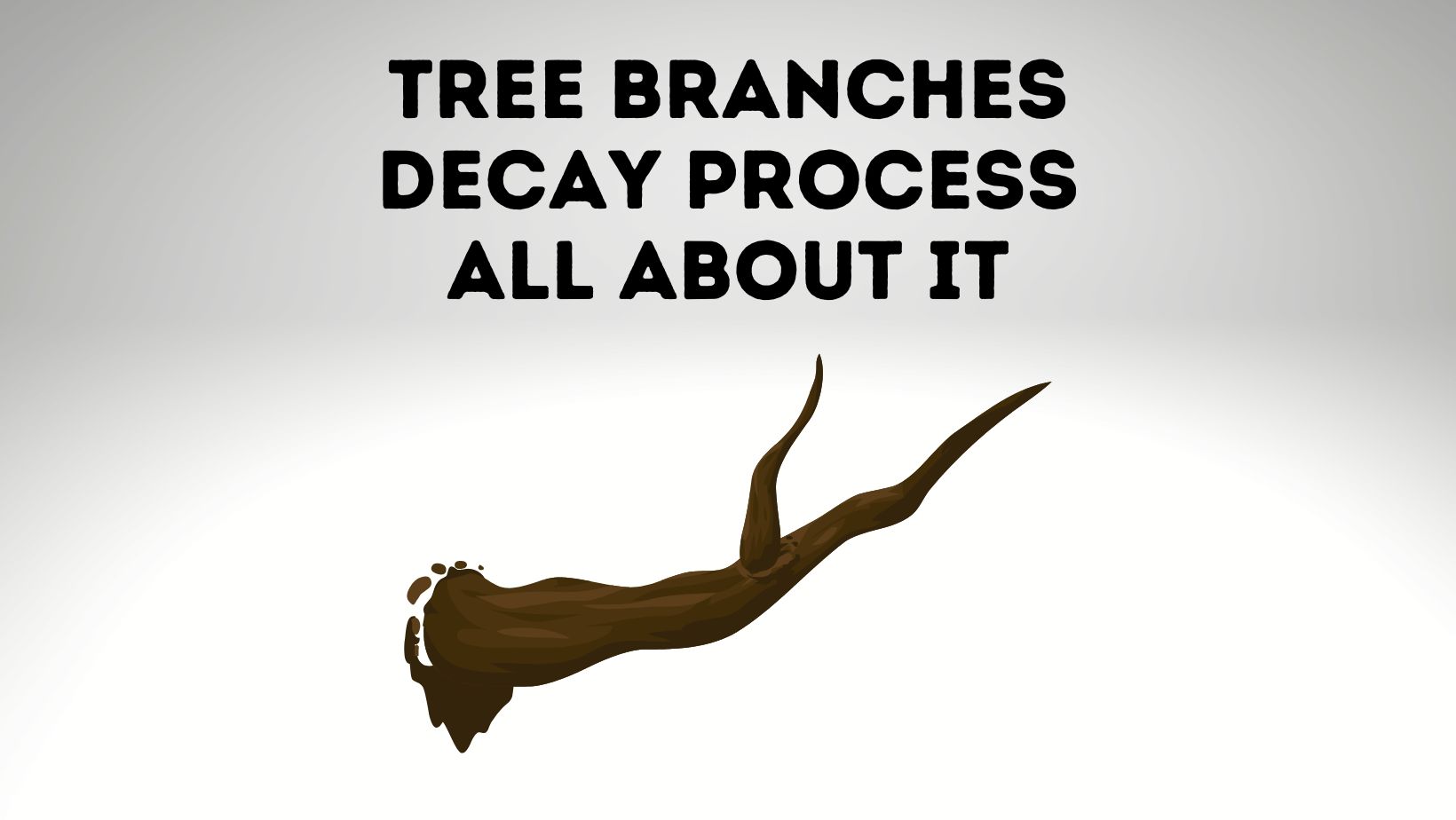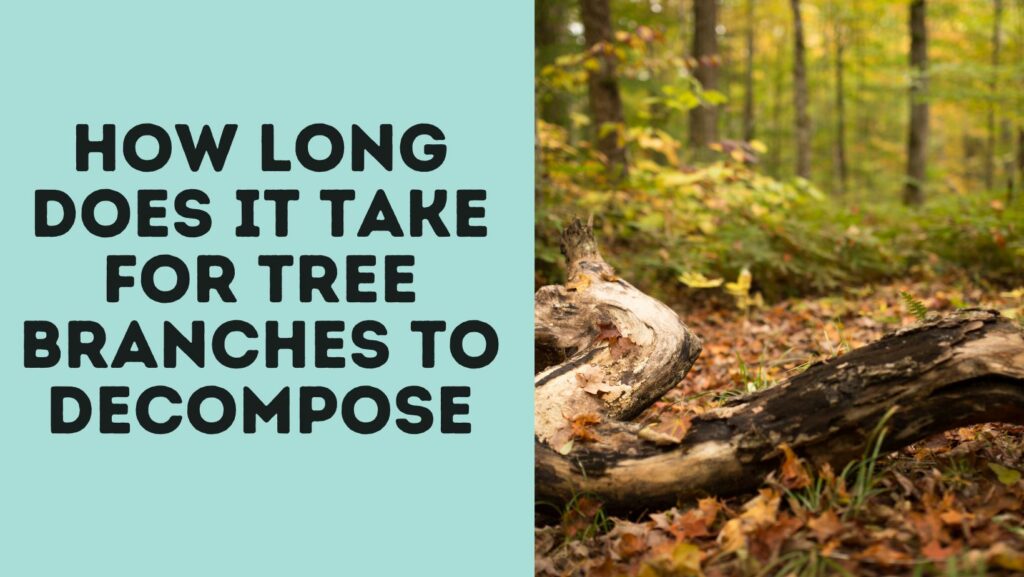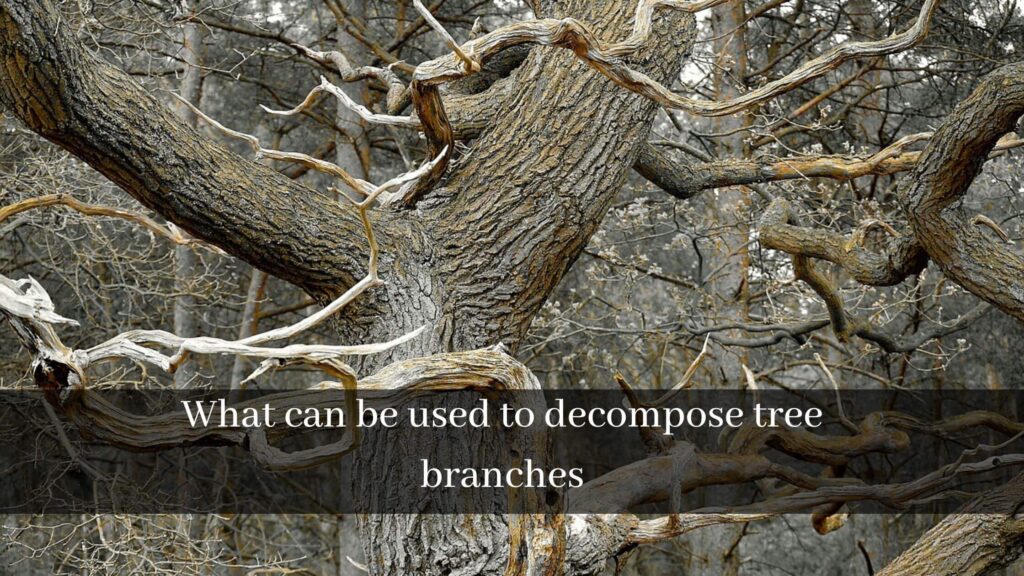
Wondering How Long Does It Take For Tree Branches To Decompose? Well, It can take up to 10 to 100 years or more for timber to decay, relying on the species and forest kind. Some other factors like temperature, pressure and Geographical Location also play a role in how fast or slow the decomposition will take place.
Indeed, it’s necessary to remove dead trees and tree branches because of an unsafe scenario. However, as finished wood and tree branch are broken down by fungi, bacteria, and other life forms, it promotes the growth of new plants by reintroducing vital nutrients to the ecosystem.
So, decomposed organic waste can be used as fertilizer to develop plants. Today’s precious post regarding Composting gardening will effectively cover tree branches’ decomposition facts.
If tree branches are lying around your house, you usually want them to vanish. But, the question of how long those tree branches will take to decay has no clear answer.
Here we explore how rapidly tree branches degrade using the appropriate additives and techniques with the rate of disintegration for tree branch decomposition. But everyone and everything is conditioned in nature, and so are the tree branches.

Laws of nature on tree branch decomposition.
You may make mistakes, but Mother Nature never makes mistakes; she keeps her balance right. The old is mixed into nature as soon as the new is created. In such a manner, tree branches also decompose after a few years.
If left intact, stumps, stems, and limbs will take many years, or even decades, to decay. But unlike plastic, every tree branch eventually decomposes.
If trees never decomposed, the Earth would be covered in their carcasses to a depth of tens or perhaps hundreds of feet, which should clear up any confusion. However, the length of time it takes for a plant stem to rot varies on the kind of tree, its size at the time of falling, and the conditions in the area immediately surrounding it.
The season and climate also impact the branch’s size, quality, moisture content, and structural integrity. Remember that any of these factors could affect how quickly tree branches decompose.
How long does it take for tree branches to decompose?

Practically, it is impossible to pinpoint a time for this kind of event since, even if two similar trees fell side by side, their decomposition rates would differ because, despite their proximity, their surroundings would not be equal.
One can only predict that it will take a certain amount of years. Therefore, the rate at which a tree will decay is not predictable. Based on the size and species of the tree, the timing would change dramatically even if we considered one location and one climate. However, tree names and kinds adhere to a few fundamental general criteria.
- Hardwoods decompose slower than softwoods, all other factors being equal.
- More enormous trees decompose slower than small trees.
- Redwoods, Bald Cypress, and Teak outlast other trees in their respective environments.
- Wet trees decompose faster as compared to dry trees.
- Warm trees decompose faster than cold trees.
- Black locust, Osage orange takes a century.
These branches serve as a fungus-growing environment in numerous scenarios. Meanwhile, fungi cannot destroy the plant because different fungus species operate at various speeds. Small units often take five to ten years to disintegrate. However, larger branches or stumps could remain for a number more years. According to the type of tree, thorough decomposition often takes 10 to 50 years.
How to make tree branches decompose faster?
Transfer the tree you want to decay to a completely shaded area. Given that fungi prefer moist, shady environments, this will provide adequate opportunity for them to flourish in them. To prevent fertilizers from draining away, dig a hole between 1/2 to 1 foot-deep and angle downward at a 45° angle alongside the tree stump or its bark. Spray with moistener and scatter some moist soil frequently.
The amount of time it takes for tree branches to disintegrate depends on their size, the type of wood, and the pile’s temperature. It takes a while to log in. You can hasten the composting of these materials by breaking them down as little as possible.
Though They will take time to decompose, some helpful suggestions let them do so gradually without requiring you to continually remove them from your compost. Burying them is the best option.
A raised garden bed’s bottom can be filled with branches, which will slowly rot and release nutrients for your garden. The tree branches can be buried to decompose without being sorted. So, burial is more straightforward.
A more comprehensive solution, though, burning them is the fastest and most straightforward solution! Burned branches and wood ash can aid your plants by giving them lime, potassium, and other vital nutrients.
You could give it another try. They will compost more effectively if you first run them through a wood chipper or shredder. If they are thin enough, you could crush them using a lawnmower. Please put them in a warm compost pile after chipping them.
Smaller parts compost more quickly. They can be broken down by hot composting, which typically takes 3-6 months. The most significant pieces can last up to a year. Certain types of wood can withstand the microbial action required for breakdown.
Some people prefer to take them to the local recycling centre, where they will be broken up into small bits and composted faster in big mounds. Sign up for the city composting program. So, the question of how long it takes for tree branches to decay is invalid.
Unlike leaves and grass, the complete decay of tree branches is measured in years, decades, or months rather than days or months. So, the inside of the game of nature is how long tree branches decay.
What can be used to decompose tree branches

If you think it will take too long to wait, between two and five decades, you may attempt decaying trees at home. Yes. If you employ the proper mixture and resources to decompose the tree branches properly, you can speed up the process.
If you currently use a mulching mower, start collecting grass clippings, coffee grounds, and other kitchen trash while mixing materials. You want a decent mixture. Most individuals achieve this by layering for a giant heap.
If possible and economical, run materials through a home hammer mill. If you turn or rotate the composting materials, the compost will be nearly ready to use after a year. Therefore, smaller pieces take less time, depending on the radius of the branches.
Long pieces take longer to degrade because they entangle and create air holes. There are two kinds of mounds: a jumbled carpet of substances high in nitrogen and a pile of dry sticks. The breeze will remove the heat and moisture from the posts. The nitrogen will be removed by rain. Sunlight will also cause mould and moss to grow.
The addition of any nitrogen sources can substantially accelerate the process. The ideal carbon-to-nitrogen ratio is 30:1.
Some wood manufacturers would like to add that after chipping the branches or, in some other way shortening the wood to under 4 inches and maintaining constant moisture in a pile, you may significantly minimize the time required for its decomposition.
If you can, maintain your compost mixture’s 3:1 moist-to-dry ratio every week. In general, sticks with a radius of fewer than two centimeters decompose reasonably well, especially if you place them in a low, moist area.
Hugel-kulture
Hugel-kulture could be used as an alternative. You may adopt the German raised bed design. Pile up all of the branches and logs, and add anything you wish to compost on top of them. Next, cover the entire area with mulch or specks of dirt.
Or, you can cover it with soil. You can create several enormous beds in your gardens, and they’ve all flourished. The decaying wood holds moisture and feeds the soil. These might be buried in the ground or constructed as raised beds.
Over the year, it will decompose roughly half of a 12-inch layer of such sticks in the humid, cool temperature. If you have enough patience with those soil-topping layers, the posts and logs will vanish after some years.
Wood fiber can have a carbon-to-nitrogen ratio from 200:1 or 400:1. Things that decompose quickly typically have a ratio of 10 to 1. One of the components that degrade more slowly is cellulose.
Because of this, long-buried timbers in the forest and stacks of sawdust left behind long after the sawmill has closed can be found if they are difficult to degrade. Better yet, burn them and distribute the ashes, ground them with a wood chipper or, if short enough, a lawn mower.
Hugel-Kulture Problems and alternatives
Even though the Hugel-Kulture method is a fantastic idea, in my experience, it takes a substantial amount of soil to cover even a shallow depth of branches due to the numerous air spaces that must be filled. My Hugel-Kulture beds primarily promote the growth of bramble-like weeds that protrude from the top of the beds.
Placing woody materials closer to the ground might hasten the decomposition of tree limbs. At this point, the wood fiber breaks down quite quickly. Because following rains, there is less time for it to dry out.
If you regularly want to cook over a fire, place the bulky, heavy items on top of the extra items after piling the former. This accomplishes two things: it retains the heavy material high, receives air and sunlight to dry for a few seasons before being used as firewood, and forces the thinner material close to the ground, where it can decompose quickly under compression.
The bottom line is moisture and soil are more crucial than temperature and other chemicals to hasten the breakdown of tree branches. A damp tree in the humid will rot more quickly than a dry one in the desert.
Conclusion
So if the question arises- will tree branches decompose? The answer should be Yes! Tree branches decompose— after some months or years, depending on the heap, heat, moistness, microorganisms, etc.
Nonetheless, running the components through a wood chipper first is preferable to branch-wood decomposition; you can utilize the resulting mulch in your flower beds. You can burn or bury according to your time and needs- it’s ultimately your choice. But, the use of harmful chemicals should never be applied in haste.
Don’t harm your soil and other ecosystemic kinds of stuff. To compost tree branches, you must rely on nature with those eco-friendly techniques. You have to be patient with the time it takes for them to rot. Remember, the purpose of this blog is to encourage people to behave towards nature. So, do not destroy the balance of life and soul for shortcuts.
